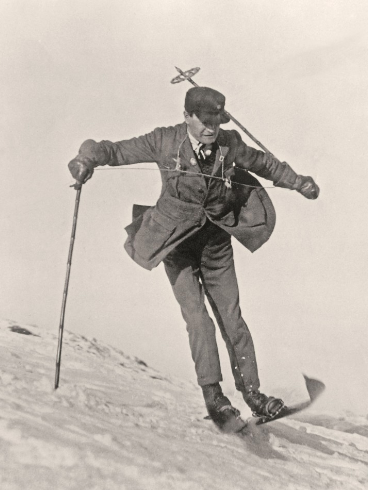After So Many Years, Can You Improve? Here’s A Way.

First, do you want to improve your skiing? If you don’t care that much, read no further. If instead you still have a hankering for greater skill and more satisfaction, then the good news is “Yes, you can”.
The “Int/Att Loop”© gives you the tools to do it.
But improvement doesn’t come by doing what you’ve already been doing for years. If you always do what you’ve always done, you’ll always get what you always got. If your choice is to become more skillful, then your choice is to change. To change, you need to:
- Know what to change—should you do something different, or something differently?
- How to change it
- Have a set of tools to do it with.
You will also need one other commodity—persistence. The great joy that comes from going on such a journey is that it’s an adventure that delivers huge satisfaction.
What is the Int/Att Loop©?
Back in the 70’s and 80’s two of Britain’s top coaches uncovered how humans learn to do physical things. Through considerable research, they identified a process that is simple to understand and use.
This process is not how to ski, nor how to have a skiing vacation, it is how to effect the kind of performance changes you desire. It has to to do with two completely separate nervous systems we have:
- the Efferent system
- the Afferent system.
Let’s say, you make a decision to do something. This is your INTENTION. The message from your brain to your muscles is carried by the Efferent system. But your brain needs to gather information from your senses to know that the instruction was carried out and what the effect was.
That information sent back to the brain via the Afferent nerves. Now, you are paying ATTENTION to those sensors. With that information, your brain can modify the next actionable decision to slowly bring your performance to where you want it to be.
Intention/Attention forms a feedback loop.
It is explained much more fully in many of the instructional videos you can find via www.bobski.com.
Your Action Plan For Better Skiing.
So, how do you use this dual nervous system concept?
Say you’re on a gentle bit of piste. You intend to work on some aspect of technique. You will only ski in very short sections—no more than 100 yards at a time. Here’s how it goes
- Choose a task – something simple such as “link two arcs together seamlessly”.
- Decide on one very small element of behavior—something simple such as “flex my ankle ALL the time”. That message will be sent by your Efferent system.
- This is important: You must then decide beforehand which of your senses you will pay heed to that will constitute a message back to your brain via the Afferent nerves. Most likely, in this case, it will be a feeling of constant pressure between your shin and the front of your boot. But for some other task it might be what you hear or see.
- If you were working with a coach, you would stop after the very short distance and report to her what you felt. Not how you felt. Not what you “thought”. This is not about thinking.
What you are attempting to do is to develop within yourself the ability at all times to be aware of what you sense, within the context of a simple and very powerful, plan.
This works. Watching someone else ski doesn’t work. “Getting the miles in” doesn’t either. If you find this interesting and have specific questions, don’t hesitate to send me them at bobski@bobski.com











